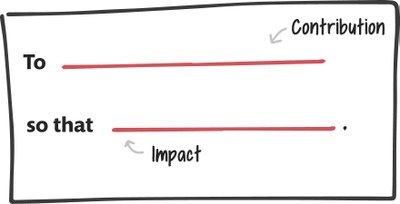Find Your Why
Finding Your WHY
Are you able to say that you are working in your sweet spot, with a clear understanding of why you are in your position…why you get up every morning? Have you ever wondered about your WHY…that deep-seated purpose, cause or belief that is the source of your passion and inspiration? People will follow you not based on what you do, but why you do it. That is why finding your WHY, as an individual and as a leader, is so very important. How can you begin to discover your personal WHY? That is where the book, Find Your Why by Simon Sinek, comes in.
Your WHY is akin to Ikigai (the sweet spot at the intersection of what you love, what you are good at, what your system needs, and what you can get paid to do). We talked about Ikigai in a Faculty Feed blog post (November 26, 2019) . But how do you find your ikigai? Find Your Why, will help show you the way. You owe it to yourself. And, if you hold a leadership position, you owe it to the people in your charge, to help them feel like they are a part of something meaningful that is bigger than themselves.
Here is a shortened version (less than 3 minutes) of Simon Sinek’s TED talk about his first book, Start with Why (2011), to get you started. Find Your Why, is the playbook that then walks you step-by-step through the process to show you how to discover your WHY. The goal of the exercise is to craft a simple and clear WHY statement that is actionable and focused on the effect you will have on others then is expressed in affirmative language that resonates with you. Eventually, you will put your WHY statement in the format of:
TO (your contribution), SO THAT (your impact).
That’s it. Just one sentence.

STEP 1: Gather Stories and Share Them with a partner or facilitator
We each have only one WHY and it is not a statement about who we aspire to be; it expresses who we are when we are at our natural best. In this step, you must remember 6 to 10 stories from your past. Tell these in specific detail and with the strong emotion (positive and negative) as you recall it and deliver the stories to someone who would be hearing these stories for the first time (a spouse is too close). The partner/facilitator then takes notes while you are telling the stories and helps you to identify recurring themes from those stories. This will form the basis for your WHY. Remember, the goal of this step is to uncover who you are.
STEP 2: Identify and Analyze Themes
Reconnecting with your past stories will allow certain themes (phrases) to emerge, when you were at your very best, and when you were at your worst. These themes may be something like, “push the boundaries”, “see the bigger picture” or “support others”. These themes will provide insight to you and your facilitator that will define what you were doing when you were at your very best ( your WHY) and when you were at your worst (themes to avoid or minimize).
STEP 3: Draft and Refine a WHY Statement
With a few themes in hand, try to write your WHY statement. Remember it is only one sentence in the format noted above: TO (your contribution), SO THAT (your impact). Several iterations will likely be necessary in order to get the wording just right so that the themes from your stories are captured. Remember that the goal of writing the WHY statement is so that you can act on it.
You may be at a point in your life or career where you feel like you have lost your way. Or perhaps, frustration with job demands have burned you out. Maybe, you just don’t feel like you are fully engaged with your work. If so, I suggest you get this book and go through the exercise. Reflecting on the stories may take time and the session with your facilitator a few hours, but this is such an important investment. Very few of us take enough time to reflect on our past and what it means for who we are right now.
When we work with a clear WHY in mind, we can show up every single day with the feeling that we are part of something bigger than ourselves. We are more likely to find joy and satisfaction in our work if we take the time to uncover our WHY and commit to living there.
Do you want to wake up every morning with a clear sense of why the day matters?
Get the book this week. Commit to the exercise. Find your WHY…and ACT on it.
Please check out this video featuring UofL President Dr. Neeli Bendapudi in a candid fireside chat with the author of Find Your Why Simon Sinek about his renowned focus on creating a great workplace culture.
References:
Sinek, S. (2017). Find your why: A practical guide to discovering purpose for you or your team. New York, NY: Portfolio/Penguin, an imprint of Penguin Random House, LLC.
Sinek, S. (2011). Start with why how great leaders inspire everyone to take action. London: Portfolio Penguin.